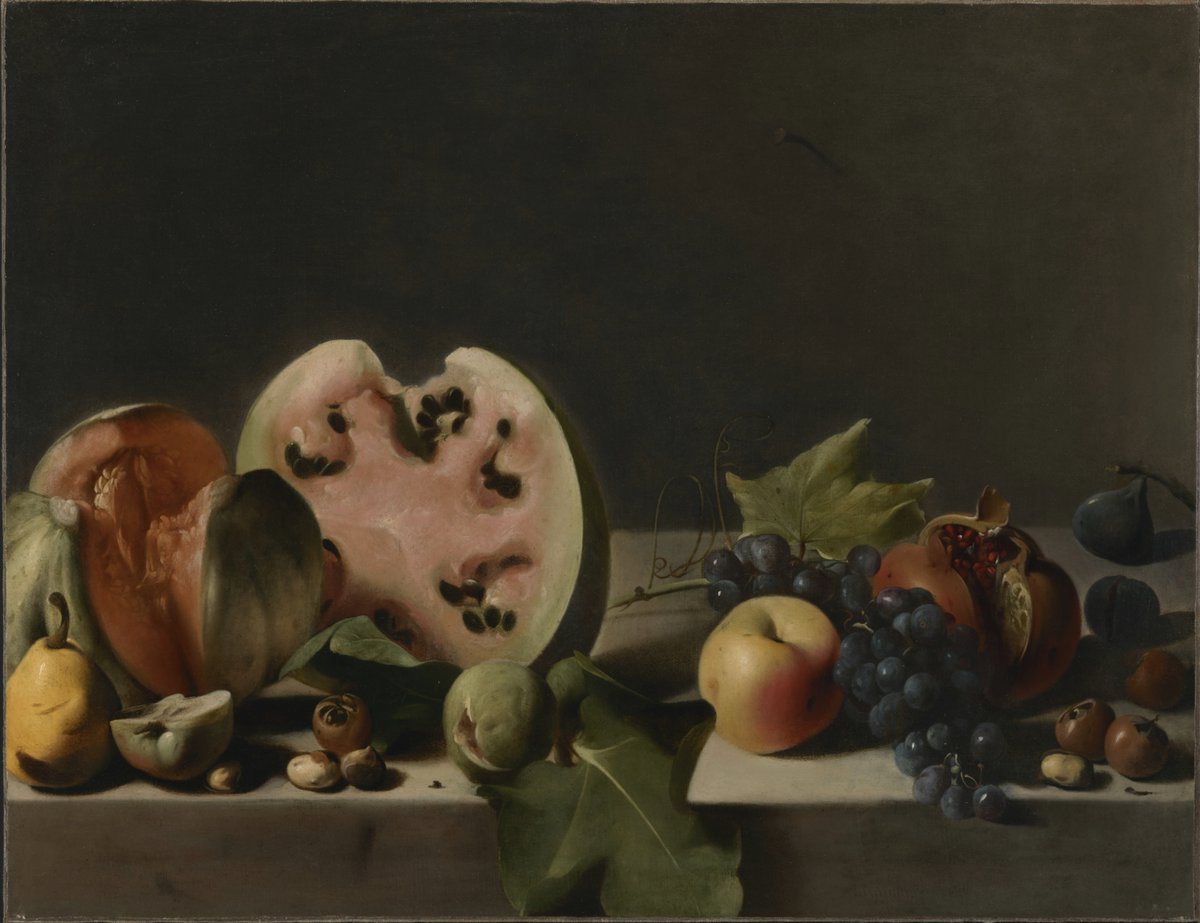By all accounts, the artist’s name is lost to history. No signature, no diary, no dusty contract. Just a handful of paintings left behind in Rome more than four centuries ago. But whoever the mystery painter known as the “Pensionante del Saraceni” was, he sure knew how to arrange a table.
The Kimbell Art Museum in Fort Worth has just acquired one of his finest works — “Still Life with Melon, Watermelon, and Other Fruits,” painted around 1610 to 1620. The piece went on view today and joins another heavyweight in the Kimbell’s collection: Caravaggio’s “The Cardsharps,” now back in town after a five-month stint at the Palazzo Barberini in Rome, where more than 450,000 visitors came to see it.
Now, both paintings hang in the Kimbell’s Louis I. Kahn Building — and together they tell a story of transformation.
This nameless artist’s piece isn’t flashy. It’s modest in size — just under two feet tall and three feet wide — but it pulls you in. A spread of ripe fruit sits front and center: cantaloupe, watermelon, pomegranate, grapes, an apple, a pear. Each one is rendered in exquisite detail. The watermelon glistens with moisture. The grapes glow blue-black. A leathery pomegranate is split open, its seeds gleaming like rubies. Light pools softly across the stone ledge, curling around the fruit, casting a nail’s shadow like a sundial against the wall. It’s quiet. Intimate. Real.
“Pensionante del Saraceni” is the nickname historians gave this still-unknown artist who painted in Rome in the early 1600s — part of a tight-knit circle working in the wake of Caravaggio. The name comes from a guess: that the artist once lodged with Carlo Saraceni, a Venetian painter known to have taken in boarders. Whether the Pensionante was Italian, French, Dutch, or Spanish is still up for debate. But his style shows a deep understanding of Caravaggio’s innovations — especially the way everyday objects, when lit just right, can feel holy.
Unlike Caravaggio, who often filled his still lifes with rot, worms, and bruised leaves as a grim reminder of death, the Pensionante didn’t lean so heavily into vanitas symbolism. His fruit is full of life. Not perfect, not overly idealized — but fresh, seasonal, and real. The kind of fruit you’d see at a summer market and want to eat right then and there.
The Pensionante’s name may be lost, but his brushwork isn’t. And now, one of his most vivid and tactile paintings has found a permanent home in Fort Worth.
Eric M. Lee, director of the Kimbell Art Museum, said, “Still Life with Melon, Watermelon, and Other Fruits is one of the artist’s most important paintings, and it will make a significant contribution to the Kimbell’s small but outstanding collection of still lifes and works influenced by Caravaggio’s distinctive style.”
